Service Alert
Service Alert
En raison de la grève des employés de Postes Canada, le CAÉB a suspendu la production et l'envoi de documents papier ainsi que l'envoi des lecteurs Envoy Connect. Les options numériques ne sont pas affectées.
En raison de la grève des employés de Postes Canada, le CAÉB a suspendu la production et l'envoi de documents papier ainsi que l'envoi des lecteurs Envoy Connect. Les options numériques ne sont pas affectées.
Articles 21 à 26 sur 26
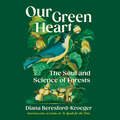
Par Diana Beresford-Kroeger. 2024
In this inspiring culmination of Diana Beresford-Kroeger’s life’s work as a botanist, biochemist, biologist and poet of the global forest,…
she delivers a challenge to us all to dig deeper into the science of forests and the ways they will save us from climate breakdown—and then do our part to plant and protect them.As the last child in Ireland to receive a full Druidic education, Diana Beresford-Kroeger has brought an unusual and ancient holistic attitude to the science of trees, which has led her to many fresh insights into how closely we are tied to one another and to the natural world. Her influential message is to pay rapt attention to trees, because they are the green heart of the living world. Forests are our lungs, our medicine, our oxygen and the renewal of our soil. Planting the right trees in the right places, protecting the last virgin forests and working to create new ones is our best means to ensure a future for our children and grandchildren on this burning earth.Each of the essays gathered in Our Green Heart show us a slice of the natural world through Diana’s unique lens, illuminating the way our health, individually and as a species, is tied to the health of the forest—a tie we ignore at our peril. She maps the science that still needs to be done—there is so much we don’t know about the ways trees and forests work—but also, eloquently, shows us the path to survival that her own science has revealed, the "bioplan" or blueprint for the connectivity of life in nature. If we realize that even the flowerpot on our doorstep is a natural habitat, and plant it according to its bioplan, we will be aiding and abetting life rather than destroying it.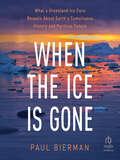
In 2018, lumps of frozen soil, collected from the bottom of the world's first deep ice core and lost for…
decades, reappeared in Denmark. When geologist Paul Bierman and his team first melted a piece of this unique material, they were shocked to find perfectly preserved leaves, twigs, and moss. That observation led them to a startling discovery: Greenland's ice sheet had melted naturally before, about 400,000 years ago. In When the Ice Is Gone , Bierman traces the story of this extraordinary finding, revealing how it radically changes our understanding of the Earth and its climate. A longtime researcher in Greenland, he begins with a brief history of the island, both human and geological. For the origins of ice coring, Bierman brings us to Camp Century, a US military base built inside Greenland's ice sheet, where engineers first drilled through mile-thick ice and into the frozen soil beneath. Decades later, a few feet of that long-frozen earth would reveal its secrets—ancient warmth and melted ice. Changes in Greenland reverberate around the world, with ice melting high in the arctic affecting people everywhere. Bierman explores how losing Greenland's ice will catalyze devastating events if we don't change course and address climate change now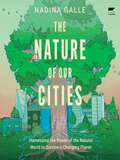
In the tradition of Elizabeth Kolbert and Michael Pollan, The Nature of Our Cities is a stirring exploration of how…
innovators from around the world are combining urban nature with emerging technologies, protecting the planet's cities from the effects of climate change and safeguarding the health of their inhabitants. We live in an age when humanity spends 90% of its time indoors, yet the nature around us—especially in America's cities—has never been more vital. This distancing from nature has sparked crises in mental health, longevity, and hope for the next generation, while also heightening the risks we face from historic floods, heatwaves, and wildfires. Indeed, embracing nature holds untapped potential to strengthen and fortify our cities, suburbs, and towns, providing solutions spanning flood preparation, wildfire management, and promoting longevity. As ecological engineer Dr. Nadina Galle shows in The Nature of Our Cities nature is our most critical infrastructure for tackling the climate crisis. It just needs a little help. A fellow at MIT's Senseable City Lab and selected for Forbes' 30 under 30 list, Galle is at the forefront of the growing movement to fuse nature and technology for urban resilience. In THE NATURE OF OUR CITIES , she embarks on a journey as fascinating as it is pressing, showing how scientists and citizens from around the world are harnessing emerging technologies to unlock the power of the natural world to save their cities, a phenomenon she calls the "Internet of Nature." Traveling the globe, Galle examines how urban nature, long an afterthought for many, actually points the way toward a more sustainable future. She reveals how technology can help nature navigate this precarious moment with modern advances such as: Laser-mapping that identifies at-risk neighborhoods to fight deadly health disparities A.I.-powered robots that prevent wildfires from reaching urban areas Intelligent water gardens that protect cities from floods and hurricanes Advanced sensors that achieve 99% tree survival in dry, hot summers Optimistic in spirit yet pragmatic in approach, Galle writes persuasively that the future of urban life depends on balancing the natural world with the technology that can help sustain it
Par Philip Lee. 2024
Entre le Québec et le Nouveau-Brunswick s'étend une rivière majestueuse aux eaux d'une rare transparence, aux imposantes berges boisées, où…
foisonne une population de saumon qui en a fait un lieu prisé des animaux et des hommes depuis des temps immémoriaux : la Ristigouche. Naviguant ses flots depuis l'enfance, l'écrivain et journaliste Philip Lee remonte dans son canot pour nous entraîner sur les anciennes routes de portage jusqu'au cours principal, qu'il descend vers l'estuaire de la baie des Chaleurs. Dans une prose aussi souple que les sinuosités de la rivière, il nous en raconte l'histoire, en explore les innombrables strates - géologiques, environnementales, humaines, industrielles - et nous invite à découvrir cet écosystème parmi les plus riches de notre planète pour mieux le protéger. Ristigouche, c'est faire du canot en compagnie du meilleur guide imaginable. En plus d'être un grand conteur, Philip est un fabuleux chercheur. Vous croiserez bien sûr des gens riches et célèbres - les Irving du Nouveau-Brunswick, Teddy Roosevelt, les Vanderbilt, le marquis de Lorne et son épouse, la princesse Louise, fille de la reine Victoria -, mais vous rencontrerez aussi des gens ordinaires qui vivent le long de la rivière et vous vous en éprendrez : bûcherons, pêcheurs, francophones, anglophones, Mi'gmaq. C'est un cours d'eau qui a connu bien des tumultes, depuis l'ignoble expulsion des Acadiens il y a près de trois siècles jusqu'à ce jour de 1981 où des agents de la Sûreté du Québec et des gardes-pêche québécois ont battu et arrêté des membres de la Première Nation de Listuguj pour avoir pêché le saumon au filet. Le saumon, bien sûr, est au cœur de ce superbe livre, tout comme il est l'attraction principale des eaux cristallines de la Ristigouche. Infatigable défenseur de l'espèce, Philip décrit les ravages de la surpêche, de l'exploitation forestière, de la pollution et du changement climatique. Ce livre est son plaidoyer pour la conservation, la protection et la restauration de ce magnifique cours d'eau. Mais c'est aussi, par bonheur, un livre rempli d'amour pour la rivière et d'espoir pour son avenir. Roy MacGregor, auteur et chroniqueur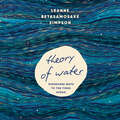
Par Leanne Betasamosake Simpson. 2025
Acclaimed Nishnaabeg writer Leanne Betasamosake Simpson takes a revolutionary look at that most elemental force, water, and suggests a powerful…
path for the future.For many years, Leanne Betasamosake Simpson has found refuge in skiing—in all kinds of weather across different forms of terrain, often following the trail beside a beloved creek near her home. Recently, as she skimmed along this path and meditated on our world's uncertainty—including environmental devastation, the rise of authoritarianism, and the effects of ongoing social injustice—her mind turned to the ice beside her, and the snow beneath her feet. And she asked herself: What might it mean to truly listen to water? To know not only the land on which we live, but the water that surrounds and inhabits us? To coexist with and alongside water? So begins this renowned writer's quest to discover, understand, and trace the historical and cultural interactions of Indigenous peoples with water in all its forms. On her journey, she reflects on the teachings, traditions, stories, and creative work of others in her community—particularly those of her longtime friend Doug Williams, an Elder whose presence suffuses these pages; reads deeply the words of thinkers from other communities whose writing expands her own; and begins to shape a "Theory of Water" that reimagines relationships among all beings and life-forces. In this essential and inventive work, Simpson artfully weaves Nishnaabeg stories with her own thought and lived experience—and offers a vision of water as a catalyst for transformation, today and into our shared future.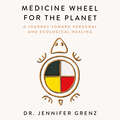
Par Dr Jennifer Grenz. 2024
A farm kid at heart, and a Nlaka'pamux woman of mixed ancestry, Dr. Jennifer Grenz always felt a deep connection…
to the land. Which is why, after nearly two decades of working as a restoration ecologist in the Pacific Northwest, she became frustrated that she and her colleagues weren't making the meaningful change needed for plant, animal and human communities to adapt to a warming climate. She began to question the central conceit of restoration ecology: that somehow, we must return the natural world to an untouched, pristine state, placing humans in a godlike role—a notion at odds with Indigenous histories of purposeful, reciprocal interaction with the environment. This disconnect sent Dr. Grenz on a journey of joining her head (Western science) and her heart (Indigenous worldview) to find a truer path toward ecological healing. In Medicine Wheel for the Planet, building on sacred stories, field observation and personal experience, Dr. Grenz invites readers to share in the teachings of the four directions of the medicine wheel: the North, which draws upon the knowledge and wisdom of elders; the East, where we let go of colonial narratives and see with fresh eyes; the South, where we apply new-old worldviews to envision a way forward; and the West, where a relational approach to land reconciliation is realized. Eloquent, inspiring and disruptive, Medicine Wheel for the Planet circles in on an argument that a multiplicity of worldviews are required to safeguard our Earth.